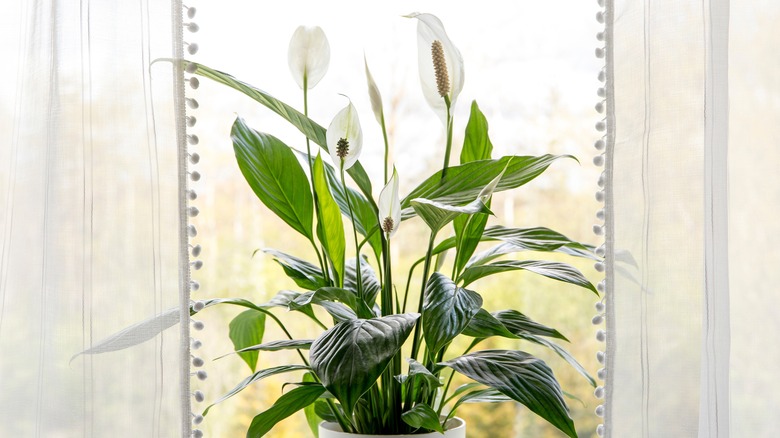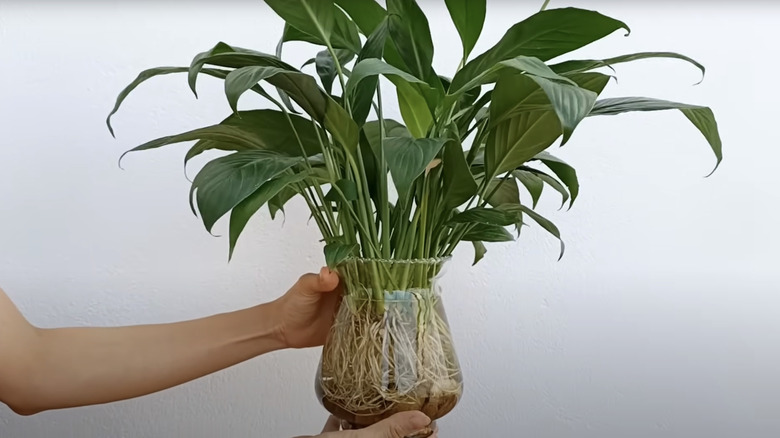The Simple No-Soil Method For Growing Beautiful Peace Lilies
With some houseplants being more finicky and high maintenance than others, plant owners are grateful for a low-maintenance option like peace lilies (Spathiphyllum spp.), which live up to their name. In fact, the common name comes from the white flag waved to call a truce during wars. They're so low-maintenance that they don't even need soil.
Peace lilies do best in well-lit areas (though not in direct sunlight), but can still bloom in low light. But that's if the light is no dimmer than what you need to read a book by. One of the benefits of peace lilies is that they're one of the top air-purifying indoor plants, with the ability to get rid of toxins like benzene and formaldehyde. However, they're also toxic to pets and children if consumed, so keep these plants out of reach of your two- and four-legged littles.
Placed in an area protected from drafts, including windows, air conditioning, and heaters, and kept evenly damp, peace lilies will reward you with their dark green foliage and lightly fragrant white flowers. Peace lilies like to be slightly root-bound, but if you notice roots escaping from the drainage holes at the bottom of the pot or creeping out of the surface of the soil, it may be time to repot. Instead of simply transplanting your potted plant, take this opportunity to divide your peace lily and grow it in water instead of soil. With little effort and cost, you'll end up with some new plant babies to freshen up your home or to share with others.
Propagating peace lilies in water
When houseplant owners think of propagation, they often think of growing roots from plant cuttings. However, cutting a stem from a peace lily the way you would cut something like a pothos would kill it. Instead, with peace lilies, we're dividing the parent to produce new plants. The ideal time to do this is in the spring or summer, while the plant is actively growing. This timing gives the newly divided stems a chance to get established before winter arrives and the plants slow their growth.
When dividing your plant, turn the pot onto its side and gently press down on it until the soil loosens up enough for you to ease the plant out. Do your best to identify and separate the clusters of leaves within the plant, with each having its own set of roots. But if the plant is severely root-bound, and you're unable to pinpoint individual clusters, you can divide the main root ball with a sharp, clean knife.
Rather than plant your new collection of offshoots in soil, rinse the dirt off the roots and place the plants in narrow vases filled with water. Make sure only the roots are immersed in water, with the leaves and base of the plant above the water line to avoid rotting. Change out the water each week, or top up the vase with fresh water if you've noticed evaporation during the week. Keep in mind that the divisions may not flower within the first year. Be patient, keep them in their ideal living environment, and you'll likely be rewarded with blooms over time.

